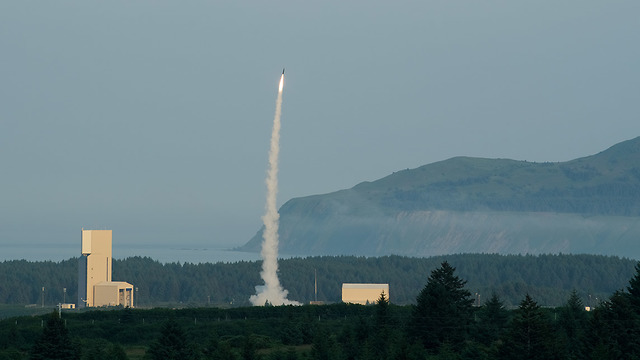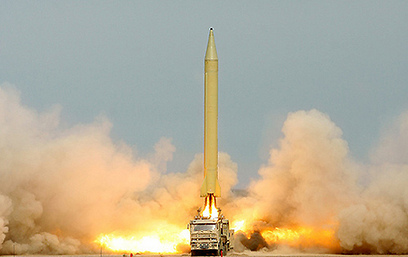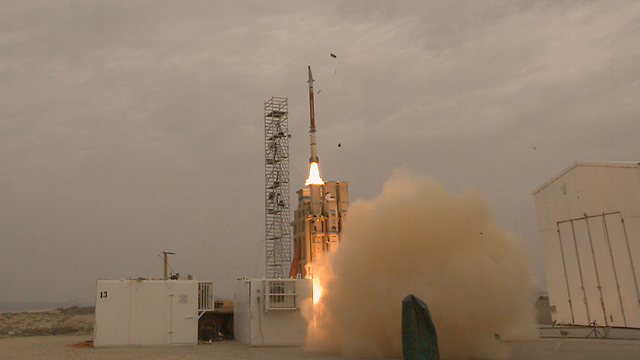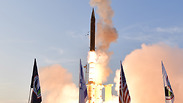
The Arrow 3 is crucial to Israel's defense - for now
Analysis: The new missile defense system is a vital component of Israel's response to the threat of Iranian ballistic missiles armed with nuclear warheads; and while the IDF is constantly upgrading its four-fold protection against such attacks, it is also working on a new system to counter the next generation of hypersonic projectiles
The Arrow 3 is Israel's safety net in the event that Iran comes to possess nuclear weapons. It has the ability, now proven beyond any doubt, to destroy a ballistic missile armed with a nuclear warhead before Israel is endangered in any way.
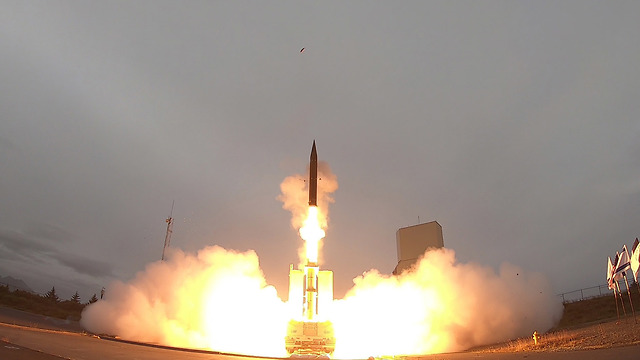
And it works not just against Iranian missiles; any missiles fired at Israel from other locations around the world could be brought down if, as feared, Iran's atomic aspirations lead to worldwide nuclear proliferation.
The successful test in Alaska was a product of cooperation with the American AN-TPY2 radar (also known as X-band radar), which can identify targets from a great distance and even in outer space.
This does not mean that Israel's Oren radar system is incapable of doing the same thing, but compatibility with an American system permanently stationed in the Negev Desert is a vital safety net should anything go wrong with the Israeli system.
Now Israel must make sure it has the launcher and missile stockpiles needed to counter an attack that may include large barrages of missiles carrying nuclear or hydrogen warheads fired from Iran at Israel.
In order to better understand the significance of Arrow 3 for the national security of the State of Israel and its citizens, one must appreciate that every military nuclear program is based on three basic components:
1. Fissionable material - plutonium or highly enriched uranium, which forms the nuclear explosive
2. Explosive device - the blast mechanism that initiates the nuclear fission process inside the bomb's plutonium or uranium core
3. The method of delivering the nuclear weapon, which makes it possible to send the bomb over the target and detonate
In terms of delivery, there are three main options get a nuclear bomb to its target: Aircraft, as the Americans did in Hiroshima and Nagasaki during World War II; cruise missile, which is basically a small unmanned aircraft carrying a nuclear device; and ballistic missile.
With a ballistic missile, the projectile rises, exits the atmosphere, flies in an arched orbit, returns to the atmosphere when the warhead has separated, and then the warhead explodes. This usually involves a single warhead weighing 800 kilograms per tonne, or several warheads weighing some 250 kilograms each. These small nuclear warheads separate from the missile close to the target, before or shortly after it reenters the atmosphere.
The Iranians, to the best knowledge of Western and Israeli intelligence organizations, do not yet have proven capability to build an efficient nuclear explosive device - nor do they seem to have the ability to minimize a prototype of a nuclear explosive device to fit a missile warhead, let alone for a missile with divergent warheads - but they do want to produce divergent warheads for their Shihab-3 missile or other missiles with a range of more than 1,300 kilometers, which can reach from central or eastern Iran to Israel.
This is the driving force behind Israel's insistence on its Arrow 3 having the capability to stop a ballistic missile armed with a nuclear warhead from entering the atmosphere and detonating where it will can cause damage to Israel.
Of course, there are other options, such as placing a large nuclear bomb inside a container on a ship pretending to be a civilian merchant vessel and detonating it close to an Israeli port.
This is just an example, but one must recognize that any country that achieves nuclear capability, expending vast resources on the development of a nuclear facility and nuclear warheads will not risk said nuclear device making a long land or sea journey that would allow foreign intelligence services to track it, and putting it in danger of being intercepted or destroyed. It could, of course, also malfunction.
Even a plane could be intercepted by enemy aircraft or anti-aircraft missiles, therefore any country that does acquire a nuclear weapon would likely launch it toward its target using a ballistic missile, a cruise missile, or even in the future a hypersonic missile.
The United States, France, Britain and China are already developing new types of missiles, which travel at five times the speed of sound towards their target. The existing missile interception systems are not capable of stopping them.
With this being the case, one may wonder why Israel views the Arrow 3 as so crucial to its national security. It is because the system is capable of intercepting ballistic missiles once they have left the atmosphere - namely, in space - even before the warhead or warheads split off.
Destroying the warhead while it is still in space ensures that not only will the missile miss its target on Earth, but what remains of it and its warheads will not reenter the atrmosphere and hit the target area -namely, Israel.
Furthermore, successfully intercepting a nuclear warhead that has reentered the atmosphere in or near Israeli airspace could cause severe radioactive contamination even if it does not hit precisely the target area.
Finally, stopping a nuclear warhead before it reenters the atmosphere affords Israel the opportunity to destroy it in another way should the initial interception fail.
The Arrow 3 is one of Israel's four missile defense capabilities that can counter different methods of warhead delivery and also provide backup when one of the other systems fails.
These defense capabilities include the Iron Dome, David's Sling, Arrow 2, and now Arrow 3. David's Sling can also bring down cruise missiles with a range of hundreds of kilometers, should the Iranians, Hezbollah or the Syrians employ such weapons.
It is unclear whether the Arrow 3 system can provide a response to hypersonic weapons that will appear over the next five to ten years in the hands of the superpowers. The Iranians will take a little longer, but one has to be ready and think about it now.
But one should also bear in mind that every interception system, especially those that bring down missiles, undergoes endless cycles of development. The Iron Dome system of July 2019, for example, has far more capabilities than the original. This is also true of David's Sling and Arrow 2.
These innovations must be introduced on a continuous basis so that Israel is always at least three steps ahead of the Iranians or anyone else developing nuclear weapons and missiles.
Israel cannot afford to be asleep at the switch, assuming that it has a relatively solid response to any high-trajectory threat, especially a nuclear one.
The next thing the defense establishment and defense industries are working on is laser defense, which is supposed to enable the destruction of multiple targets within minutes.
And it is only when the State of Israel has operational laser systems can its citizens truly sleep peacefully.










